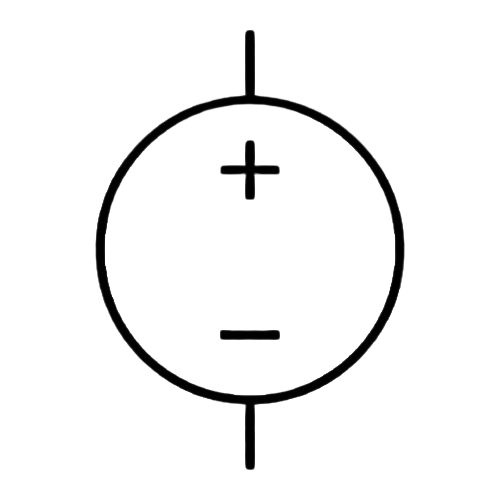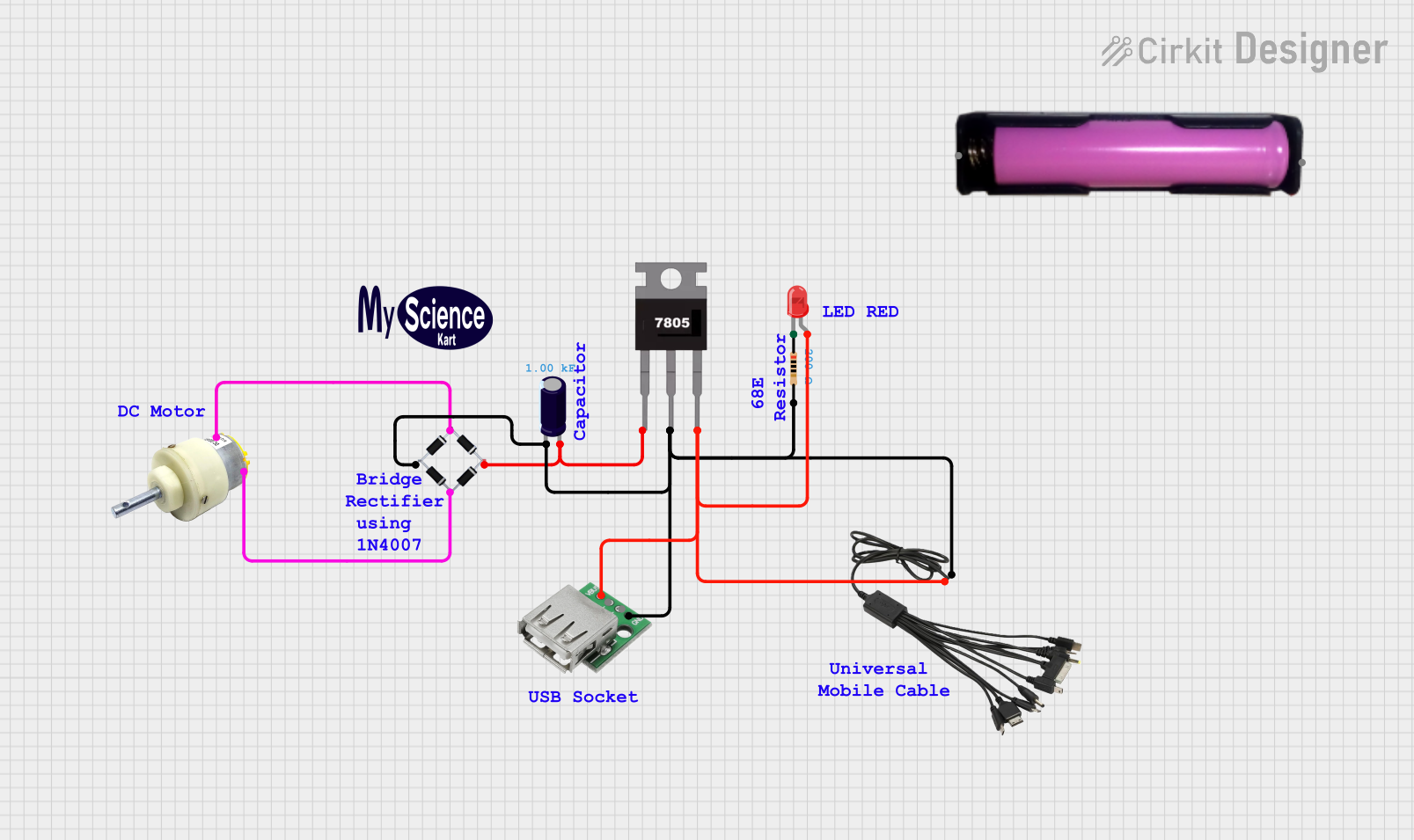
How to Use DC Power Source: Examples, Pinouts, and Specs

 Design with DC Power Source in Cirkit Designer
Design with DC Power Source in Cirkit DesignerIntroduction
The DC Power Source (Manufacturer: JJY, Part ID: DC_Power) is a device designed to provide a constant direct current (DC) voltage for powering electronic circuits and components. It is an essential component in electronics, offering a stable and reliable power supply for a wide range of applications.
Explore Projects Built with DC Power Source

 Open Project in Cirkit Designer
Open Project in Cirkit Designer
 Open Project in Cirkit Designer
Open Project in Cirkit Designer
 Open Project in Cirkit Designer
Open Project in Cirkit Designer
 Open Project in Cirkit Designer
Open Project in Cirkit DesignerExplore Projects Built with DC Power Source

 Open Project in Cirkit Designer
Open Project in Cirkit Designer
 Open Project in Cirkit Designer
Open Project in Cirkit Designer
 Open Project in Cirkit Designer
Open Project in Cirkit Designer
 Open Project in Cirkit Designer
Open Project in Cirkit DesignerCommon Applications and Use Cases
- Powering microcontrollers, sensors, and modules in embedded systems
- Supplying voltage to DC motors, LEDs, and other electronic components
- Testing and prototyping circuits in laboratories
- Charging batteries and powering portable devices
- Providing a stable power source for industrial and consumer electronics
Technical Specifications
The following table outlines the key technical specifications of the JJY DC Power Source:
| Parameter | Value |
|---|---|
| Input Voltage Range | 100-240V AC (50/60Hz) |
| Output Voltage Range | 3.3V, 5V, 9V, 12V (selectable) |
| Output Current | Up to 2A |
| Power Rating | 24W (maximum) |
| Efficiency | ≥85% |
| Ripple and Noise | ≤50mV |
| Operating Temperature | -10°C to 50°C |
| Dimensions | 100mm x 60mm x 40mm |
| Weight | 200g |
Pin Configuration and Descriptions
The DC Power Source typically includes the following connectors:
| Pin/Connector | Description |
|---|---|
| Input AC Plug | Connects to the AC mains (100-240V AC) |
| Output DC Jack | Provides the regulated DC voltage output |
| Ground Pin | Ensures proper grounding for safety and stability |
| Voltage Selector | Switch to select the desired output voltage (3.3V, 5V, 9V, 12V) |
Usage Instructions
How to Use the Component in a Circuit
- Connect the Input: Plug the AC input connector into a standard wall outlet (100-240V AC).
- Set the Output Voltage: Use the voltage selector switch to choose the desired output voltage (e.g., 5V for microcontrollers or 12V for motors).
- Connect the Load: Attach the DC output jack to the input terminals of your circuit or device. Ensure correct polarity (positive to positive, negative to negative).
- Power On: Turn on the power source and verify the output voltage using a multimeter before connecting sensitive components.
Important Considerations and Best Practices
- Check Voltage and Current Requirements: Ensure the output voltage and current match the requirements of your circuit or device.
- Avoid Overloading: Do not exceed the maximum output current (2A) to prevent damage to the power source or connected components.
- Use Proper Wiring: Use appropriate gauge wires to handle the current without significant voltage drops.
- Grounding: Ensure the ground pin is properly connected to avoid electrical noise or instability.
- Heat Dissipation: Operate the power source in a well-ventilated area to prevent overheating.
Example: Using with an Arduino UNO
The JJY DC Power Source can be used to power an Arduino UNO via its DC barrel jack. Set the output voltage to 9V and follow these steps:
- Connect the DC output jack of the power source to the Arduino UNO's barrel jack.
- Ensure the polarity is correct (center pin positive, outer sleeve negative).
- Turn on the power source. The Arduino UNO will power up, and the onboard LED will light up.
Sample Arduino Code
Here is an example of a simple Arduino sketch to blink an LED while powered by the DC Power Source:
// This code blinks an LED connected to pin 13 of the Arduino UNO.
// Ensure the DC Power Source is set to 9V and connected properly.
void setup() {
pinMode(13, OUTPUT); // Set pin 13 as an output pin
}
void loop() {
digitalWrite(13, HIGH); // Turn the LED on
delay(1000); // Wait for 1 second
digitalWrite(13, LOW); // Turn the LED off
delay(1000); // Wait for 1 second
}
Troubleshooting and FAQs
Common Issues and Solutions
| Issue | Possible Cause | Solution |
|---|---|---|
| No output voltage | Input AC not connected or power switch off | Check the AC connection and turn on the power |
| Incorrect output voltage | Voltage selector set incorrectly | Verify and adjust the voltage selector switch |
| Device overheating | Overloading or poor ventilation | Reduce the load or improve ventilation |
| High ripple or noise in output | Faulty grounding or interference | Ensure proper grounding and minimize interference |
| Circuit not powering on | Incorrect polarity or loose connections | Verify polarity and secure all connections |
FAQs
Can I use this power source to charge a battery?
- Yes, but ensure the output voltage matches the battery's charging requirements and use a proper charging circuit.
What happens if I exceed the maximum current rating?
- The power source may shut down or overheat. Always stay within the 2A limit to avoid damage.
Is the output voltage adjustable?
- Yes, the voltage selector allows you to choose between 3.3V, 5V, 9V, and 12V.
Can I use this power source outdoors?
- The power source is not weatherproof. Use it indoors or in a protected environment.
By following these guidelines and best practices, the JJY DC Power Source (DC_Power) can provide a reliable and stable power supply for your electronic projects.